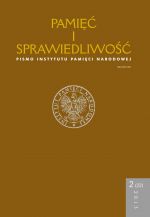Atrakcyjność komiksu historycznego na tle wymagań stawianych twórcom komiksowym przez historię i sztukę
The attractiveness of historical cartoons at the background of demands imposed on cartoon creators by history and art
Author(s): Sławomir ZajączkowskiSubject(s): History, Fine Arts / Performing Arts, Cultural history, Sociology of Art
Published by: Instytut Pamięci Narodowej
Keywords: comics; history; art; popular culture; graphic narrative; story; historical novel
Summary/Abstract: Writing about historical cartoons, one has to keep in mind two perspectives –that of art and that of history. Each of these perspectives specifies different tasks for a cartoon and these tasks are often contradictory to each other. While – for a historian – an ideal in a historical cartoon is compliance of the content and images with source documents, for a cartoon creator, the principal objective is an efficient fulfilment of the storyline. In the article, the author raises the question of a possibility to create a historical cartoon which would satisfy both art critics and historians. This question is in fact a question about the truth of historical facts in art. Searching the answer to the above question, the author points to postmodernistand avant-garde dictate, dominating today in theoretical digressions concerning the role of the art and of the history. The author recognises that the contemporary positions of theoreticians do not make it easier for him to find answers to the questions raised above.Therefore, the author turns in his considerations to classical solutions, paying attention to the attractiveness of the Aristotle principle of mimesis. He also notices that similar problems to these the cartoon creators are facing now while trying to present history in a form of a storyline, were the challenges classical authors of historical novels had to cope with earlier. Since the cartoon can be considered a part of the literary horizon, the author gives some thoughts to a dilemma whether novelists’ experiences will remain useful for cartoon creators. It seems that it is not entirely so, since contemporary fiction (and hence also cartoon) is influenced by phenomena related to a fragmentation of the plot. Therefore, the author is rather inclined to adopt the position that historical cartoon, if it wants to upkeep an element of a storytelling, will – in the future – be forced to use the experiences of filmmakers since the plot still plays an important role in movies. Closing paragraphs of the article are devoted to a poetic value of a historical cartoon and the attempt at defining it. The author tries to prove that chronological descriptions of events also characteristic of a historical source material, in case of a historical cartoon turns into a logical course of events filled with the protagonists’ emotions while, from the point of view of plastic art, it turns intoa sequence of drawn images subordinated to the rights of aesthetics of a frame and a chart. The author underlines that despite determination to accurately recreate facts in a storyline, as well as, to recreate the visual impression of the relevant epoch, the creators should also try to accomplish their own goals identical to the objectives a work of art is supposed to accomplish.
Journal: Pamięć i Sprawiedliwość.
- Issue Year: 22/2013
- Issue No: 2
- Page Range: 111-134
- Page Count: 24
- Language: Polish

